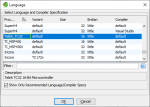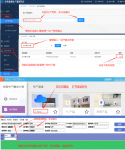G0V
New member
It is indeed unable to run directly. I burned the firmware "evk8269v3.5.pb0-sws.bin" to the E180-Z6907A module using the "TLSR Tool ver 0.0.1.6" PC software through the STM32F103C8T6 (USB2Swire-STM32F103C8-v06.hex). The black and red power wires of the USB data cable are connected to a 3.3V linear regulator, which then powers the E180-Z6907A module. The green wire of the USB data cable is connected to the PE3/DP of the E180-Z6907A module, and the white wire is connected to the PE2/DM. Then, the USB-A plug is inserted into the PC's USB interface. A prompt pops up in the bottom right corner of the PC:The E180-Z6907A Modul has 12Mhz Osci but the bytepatched BDT firmware expects 16Mhz so it will not run and needs further tweaking or the replacement of the Osci to 16Mhz

After clicking:

How to modify "evk8269v3.5.pb0-sws.bin" to make its working frequency match the 12MHz of E180-Z6907A?
Note: I have already soldered and attached the module's shield to the motherboard, if you want to replace the crystal of the E180-Z6907A module, it will be more troublesome to disassemble the shield.



Вложения
-
873 KB Просмотры: 1











